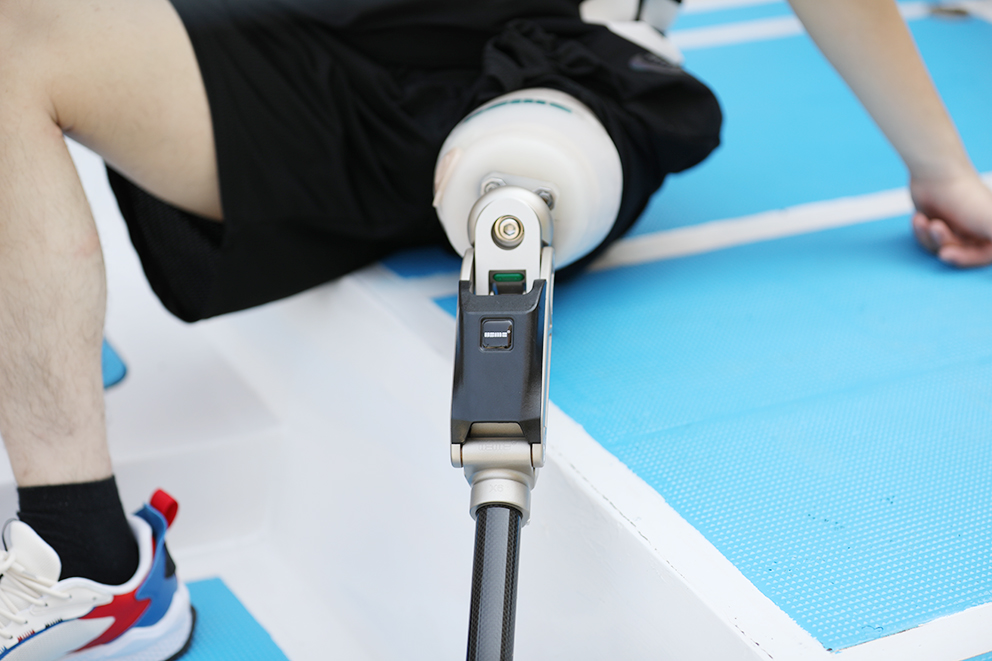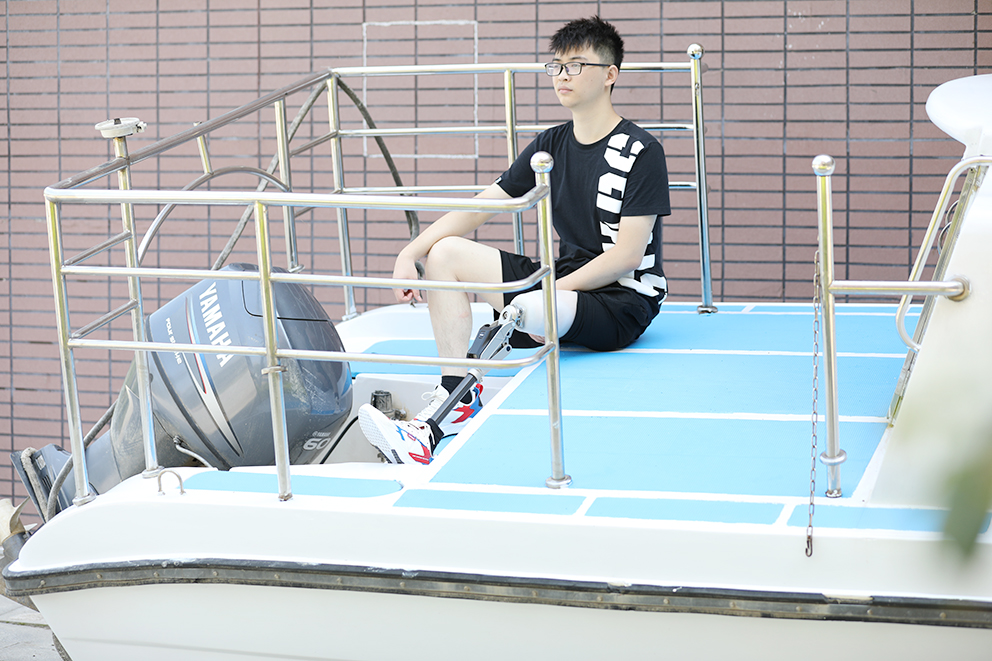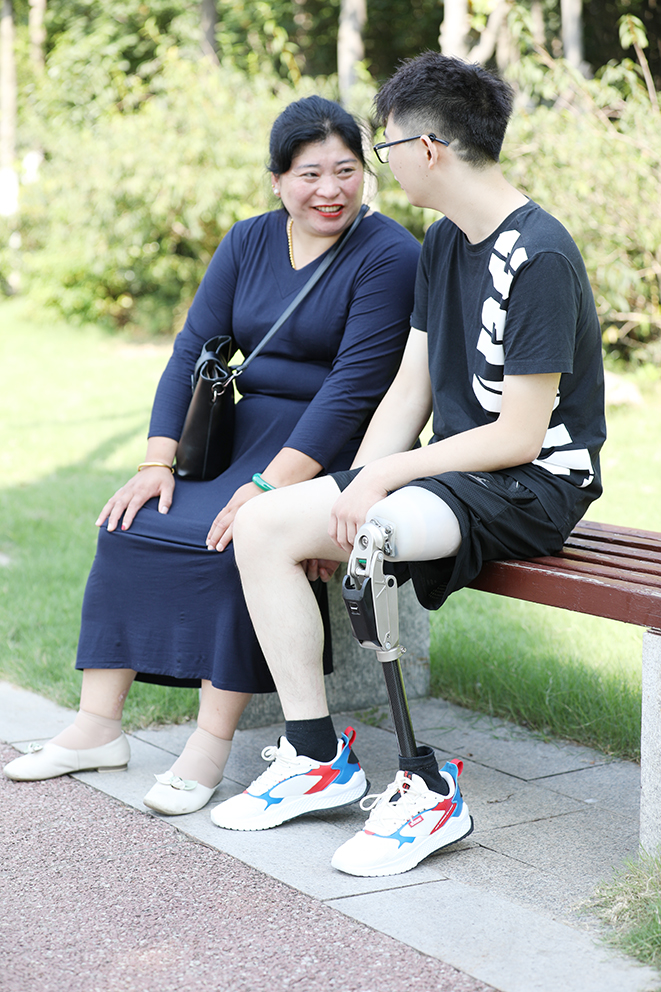News Center
Why do you wear prosthetics repeatedly chafed, even changed color?
2021-08-10 Hits:
The problem many amputees often encounter is the accumulated discoloration of the skin on the stump and the pain of the stump."Stump local skin discoloration" and "stump skin grinding pain" are what causes?

The skin chafes from wearing the prosthesis
Why is stump skin inflammation/injury painful?
Let's start by looking at the pathology/biology/chemistry of pain.
Pain is caused by the formation of prostaglandin by arachidonic acid under the action of COX. Due to the destruction of cell membrane, phospholipase A2 breaks down the phospholipid of cell membrane to release arachidonic acid, which leads to pain.
Too much stress on the local skin of the stump damaged the cell membrane, leading to the pain caused by the daily wearing of the prosthesis. As a result, phospholipase A2 decomposed the cell membrane phospholipids to release arachiidonic acid, which formed prostaglandin under the action of COX-1&COX-2, causing pain.
Excessive local force on the skin of the stump may be caused by the improper adjustment of the force line of the prosthesis, and the non-adaptation of the receiving cavity may also be the cause. The non-adaptation of the receiving cavity is the most important reason at present.

How to treat pain?
1. The adaptive prosthesis can block the generation of pain sensation and reduce the damage of cell membrane caused by local pressure.
2. Blocking the formation of prostaglandins, which are painkillers that you take when you're in pain.

Where does this melanin come from?
First of all, our stump is in a cavity environment, and the long-term pressure of the cavity causes local discoloration of the skin (excluding chronic or other underlying diseases).
In the presence of cytokines that promote and inhibit melanin production, why do stump areas become discolored and even blackened under compression?
This is because the cytokines that inhibit melanin are smaller than those that promote melanin production, thus increasing melanin production.
At the same time, the pain response to skin damage stimulates the release of endorphins.
Because endorphins and melanin are the same protein precursor as ACTH (adrenocorticotropic hormone), they are released simultaneously.
In simple terms, stump skin inflammation/injury promotes melanocyte proliferation, improves tyrosinase movement, and promotes the release of POMC (precursor protein) under the pain mechanism of inflammation.
MSH (melanin stimulating hormone) released by the precursor protein binds to tyrosinase to produce melanin.
Eventually melanin builds up in the base layer of the skin, so the stressed area of the skin starts to discolor and even turn black!
This is a case of wearing an ill-fitting prosthesis, which leads to excessive force on the stump, causing pain in the stump and skin inflammation/damage, which requires reasonable medical treatment, good pain management and feedback to your own prosthesis maker.
If there is no pain, only local discoloration, and no chronic disease/basic disease itself, do not have to care!
Local discoloration does not necessarily mean pain; it is mainly related to the stress perception of each person's body.
How to do when Stump skin local discoloration not good-looking ?
In the case of exemption from excessive pressure to accept cavity, cell replacement, the life of melanocytes is 3-5 years, and the skin color can be restored to normal color basically after 3-5 years.
So the only people who can treat skin color and stump pain are doctors and prosthetic makers.
Wearing prosthesis does not hurt is best, pain is luxury torture!

上一篇:没有了 下一篇:Exercising this body part well is the first step in prosthetic rehabilitation

The skin chafes from wearing the prosthesis
Why is stump skin inflammation/injury painful?
Let's start by looking at the pathology/biology/chemistry of pain.
Pain is caused by the formation of prostaglandin by arachidonic acid under the action of COX. Due to the destruction of cell membrane, phospholipase A2 breaks down the phospholipid of cell membrane to release arachidonic acid, which leads to pain.
Too much stress on the local skin of the stump damaged the cell membrane, leading to the pain caused by the daily wearing of the prosthesis. As a result, phospholipase A2 decomposed the cell membrane phospholipids to release arachiidonic acid, which formed prostaglandin under the action of COX-1&COX-2, causing pain.
Excessive local force on the skin of the stump may be caused by the improper adjustment of the force line of the prosthesis, and the non-adaptation of the receiving cavity may also be the cause. The non-adaptation of the receiving cavity is the most important reason at present.

How to treat pain?
1. The adaptive prosthesis can block the generation of pain sensation and reduce the damage of cell membrane caused by local pressure.
2. Blocking the formation of prostaglandins, which are painkillers that you take when you're in pain.

Where does this melanin come from?
First of all, our stump is in a cavity environment, and the long-term pressure of the cavity causes local discoloration of the skin (excluding chronic or other underlying diseases).
In the presence of cytokines that promote and inhibit melanin production, why do stump areas become discolored and even blackened under compression?
This is because the cytokines that inhibit melanin are smaller than those that promote melanin production, thus increasing melanin production.
At the same time, the pain response to skin damage stimulates the release of endorphins.
Because endorphins and melanin are the same protein precursor as ACTH (adrenocorticotropic hormone), they are released simultaneously.
In simple terms, stump skin inflammation/injury promotes melanocyte proliferation, improves tyrosinase movement, and promotes the release of POMC (precursor protein) under the pain mechanism of inflammation.
MSH (melanin stimulating hormone) released by the precursor protein binds to tyrosinase to produce melanin.
Eventually melanin builds up in the base layer of the skin, so the stressed area of the skin starts to discolor and even turn black!
This is a case of wearing an ill-fitting prosthesis, which leads to excessive force on the stump, causing pain in the stump and skin inflammation/damage, which requires reasonable medical treatment, good pain management and feedback to your own prosthesis maker.
If there is no pain, only local discoloration, and no chronic disease/basic disease itself, do not have to care!
Local discoloration does not necessarily mean pain; it is mainly related to the stress perception of each person's body.
How to do when Stump skin local discoloration not good-looking ?
In the case of exemption from excessive pressure to accept cavity, cell replacement, the life of melanocytes is 3-5 years, and the skin color can be restored to normal color basically after 3-5 years.
So the only people who can treat skin color and stump pain are doctors and prosthetic makers.
Wearing prosthesis does not hurt is best, pain is luxury torture!
Welcome more insiders to contribute to share!
Welcome amputee friends contribute to share the experience of prosthesis!
Want to talk, want to speak, want to show...
Don't forget to follow "Disan" public account
上一篇:没有了 下一篇:Exercising this body part well is the first step in prosthetic rehabilitation
 DISA GLOBAL WEBSITE
DISA GLOBAL WEBSITE 

